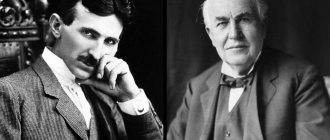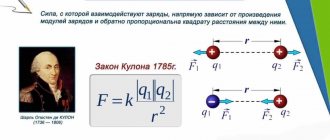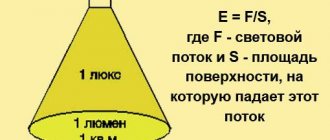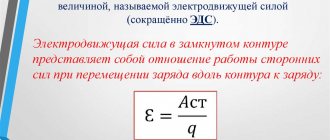What is strength?
Before considering the issue of the unit of measurement of force in the SI system, let's understand the concept of force itself.
In classical physics, it is understood as a quantity that can change the nature of the movement of some object, for example, the direction of its movement or speed. This physical quantity, together with energy, determines the intensity of any interactions that exist in nature.
When talking about strength, it is customary to consider it from two points of view:
- The nature of the origin of the force, such as gravitational, electrical or mechanical.
- The result of its action, that is, how it affected the movement of the object. In this understanding, we mean the use of Newton's second law.
Examples of force in action are the movement of a car (the mechanical force that causes its wheels to rotate) or the fall of a ball from a certain height (the force of gravity).
Definition of work of force
The force exerted on a substance is accompanied by the performance of work. The work of a force is a physical quantity numerically equal to the product of the force and the displacement passed under its action and the cosine of the angle between the directions of force and displacement.
The required work of force, the formula of which is A = FScosα, includes the magnitude of the force.
The action of a body is accompanied by a change in the speed of the body or deformation, which indicates simultaneous changes in energy. The work done by a force directly depends on the magnitude.
Historical reference
The emergence of the concept of force dates back to the times of the philosophers of Ancient Greece. In particular, Archimedes believed that any body is at rest if it is not influenced by other bodies, that is, the philosopher considered force in statics.
The first definition of this physical quantity from a dynamic position is attributed to Galileo (XVII century), who, unlike Archimedes, believed that the absence of interaction with other objects of the body in question would not change its inertial motion.
The modern concept of force was developed in his works by Isaac Newton. He defined this concept in detail, including it in all the laws of classical mechanics. Thus, Newton determined that the intensity of interaction of absolutely any bodies with a finite mass decreases as the square of the distance (the law of universal gravitation). Only one century later (late 18th century) Henry Cavendish, using a torsion balance, was able to measure the gravitational constant, which was introduced by Newton. For the listed merits of Newton in physics, the unit of measurement of force in the SI system was named after his last name.
In modern physics, the concept of force is used mainly to describe macroscopic objects. In quantum mechanics and particle physics, the concept of “energy” is often used.
Newton
The International System of Units (SI) unit of force is the newton. It is named after Isaac Newton, in recognition of his work on classical mechanics, in particular Newton's second law of motion.
One newton is the force required to accelerate one kilogram of mass at a rate of one meter per second squared in the direction of the applied force.
International System of Units and Newton
This name refers to the system of measures and quantities, which is briefly designated SI (from the French Système International). It is based on 7 basic physical quantities (ampere, kelvin, second, candela, kilogram, meter and mole). The SI was adopted in 1960, and in 1971 a final fundamental quantity, the mole, was added.
The SI unit of force is the newton. It is understood as a category that, acting on a body with a mass of 1 kg, accelerates its movement by 1 m/s for every second of time. In Russian, Newton's notation [N] is accepted; in Latin it is written as [N].
The use of prefixes approved in the SI to the basic units of measurement makes it possible to obtain their fractional or large values. For force, this could be, for example, µN (micronewton, 1 µN = 10-6 N), mN (millinewton, 1 mN = 10-3 N) or kN (kilonewton, in newtons this is 1000 N).
It is interesting to note that the newton is not one of the 7 fundamental units of force in the SI system, so it is a derived unit. In particular, 1 [N] = 1 [kg*m/s2], that is, it is expressed in terms of kilogram (mass), meter (distance) and second (time).
Everyday Joule
The unit of measurement for the magnitude of force in everyday life is:
- Energy required to lift an average sized tomato 1 meter (3 ft 3 in). Let's say the tomato weighs approximately 100 g (3.5 oz).
- The energy released when the same tomato falls a meter down.
- The energy required to accelerate a mass of 1 kg in 1 m s-2 over a distance of 1 m.
- Heat required to raise the temperature of 1 g of water by 0.24 °C.
- Typical energy released by a person at rest, every 1/60 s (approximately 17 ms).
- Kinetic energy from 50 kg person (0.2 m/s or 0.72 km/h).
- The kinetic energy of a 56 g tennis ball moving at 6 m/s (22 km/h).
- The kinetic energy of an object with a mass of 1 kg moves at √2 ≈ 1.4 m/s.
- The amount of electricity required to illuminate a 1 W LED for 1 second.
Since a joule is also a watt-second, and the common unit of selling electricity to homes is kWh (kilowatt-hour), a kWh is therefore 1000 W × 3600 s = 3.6 MJ (megajoule).
Work of force in the SI system
It was already mentioned above that the concepts of force and energy are closely related to each other. This connection can be clearly expressed through work. In physics, work is a quantity obtained as a result of the product of the modulus of the force that acts on a body in the direction of its movement and this very movement. In mathematical form, we can write: A = F*l, where F is the force model, l is the distance the body moved as a result of the action of F.
In SI, force is measured in newtons and distance in meters, so work will be expressed in N*m. However, this quantity has its own name: joule (J), that is, it is expressed in the same units as energy.
Law of Gravity
Remark 1
Gravity is one of the cases of manifestation of the action of gravitational forces.
Gravity is represented as a force that acts on a body from the side of the planet and gives it acceleration due to gravity.
Free fall can be considered in the form $mg = G\frac{mM}{r^2}$, from which we obtain the formula for the acceleration of free fall:
$g = G\frac{M}{r^2}$.
The formula for determining gravity will look like this:
Help with student work on the topic Laws of force, formulas
Coursework 460 ₽ Essay 240 ₽ Test paper 200 ₽
Get completed work or consultation with a specialist on your educational project Find out the cost
${\overline{F}}_g = m\overline{g}$
Gravity has a certain vector of distribution. It is always directed vertically downwards, that is, towards the center of the planet. The body is constantly subject to gravity and this means that it is in free fall.
The trajectory of movement under the influence of gravity depends on:
- module of the object's initial velocity;
- direction of body speed.
A person encounters this physical phenomenon every day.
Gravity can also be represented as the formula $P = mg$. When accelerating due to gravity, additional quantities are also taken into account.
If we consider the law of universal gravitation, which was formulated by Isaac Newton, all bodies have a certain mass. They are attracted to each other with force. It will be called the gravitational force.
$F = G\frac{m_1m_2}{r^2}$
This force is directly proportional to the product of the masses of two bodies and inversely proportional to the square of the distance between them.
$G = 6.7\cdot {10}^{-11}\ {H\cdot m^2}/{{kg}^2\ }$, where $G$ is the gravitational constant and it has according to the international system SI measurements constant value.
Need advice on your academic work? Ask a question to the teacher and get an answer in 15 minutes! Ask a Question
Definition 1
Weight is the force with which a body acts on the surface of the planet after gravity occurs.
In cases where the body is at rest or moves uniformly along a horizontal surface, then the weight will be equal to the support reaction force and will coincide in value with the magnitude of the force of gravity:
$P = tg$
With uniformly accelerated movement vertically, the weight will differ from the force of gravity, based on the acceleration vector. When the acceleration vector is directed in the opposite direction, an overload condition occurs. In cases where the body and the support move with acceleration $a = g$, then the weight will be equal to zero. A state of zero weight is called weightlessness.
The gravitational field strength is calculated as follows:
$g = \frac{F}{m}$
The quantity $F$ is the gravitational force that acts on a material point of mass $m$.
The body is placed at a certain point in the field.
The potential energy of gravitational interaction of two material points with masses $m_1$ and $m_2$ must be at a distance $r$ from each other.
The gravitational field potential can be found using the formula:
$\varphi = \Pi / m$
Here $P$ is the potential energy of a material point with mass $m$. It is placed at a certain point in the field.
What device is used to measure force?
To measure force in newtons, kilonewtons, millinewtons, a device called a dynamometer is used. It was invented by Isaac Newton. The device is a spring mounted on a graduated ruler. Since the stretching of a spring is described by Hooke's law, that is, it is elastic, the force is always directly proportional to the amount of elongation of the spring. This fact is used in the dynamometer when calibrating it.
In addition to the dynamometer, to measure too small forces, torsion scales are used, the main element of which is the so-called torsion pendulum. The force measurement with these scales is based on the elastic shear deformation of the working element.
Force in other systems of units
The SI system is used throughout the world and in all fields of study, however, in some areas, for historical reasons or simple ease of use, units of measurement from other systems continue to be specified. The conversion of all of them to SI units is also standardized.
One of the popular ones is the CGS system (centimeter, gram, second). This system was proposed back in 1832 by the German scientist Gauss. In it, force is measured in dynes (dyn), 1 dyne is equivalent to 10-5 newtons. GHS is often used to describe electromagnetic phenomena, since in its form of representation many laws appear simpler than in SI units.
Another system of units, commonly called technical, has often been used to describe engineering processes. In it, force is the fundamental unit through which mass is determined. It is called kilogram-force or kilopond. A kilogram-force represents the intensity of the impact on a body weighing 1 kg, which is equal to the force of gravitational attraction of this body by the Earth, that is, 1 kilopond = 9.81 newtons. With the advent of SI, the technical system of units practically ceased to be used.











